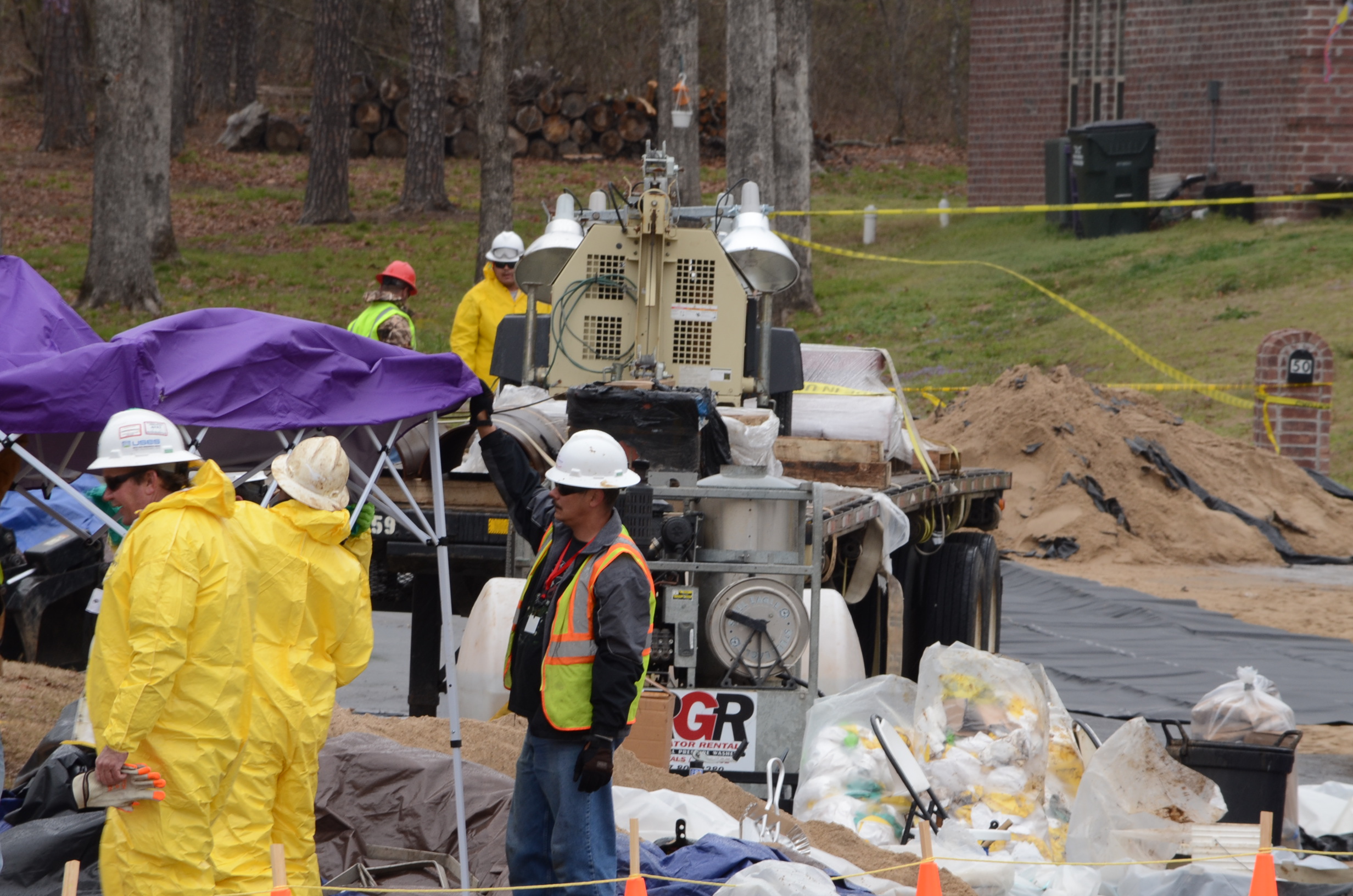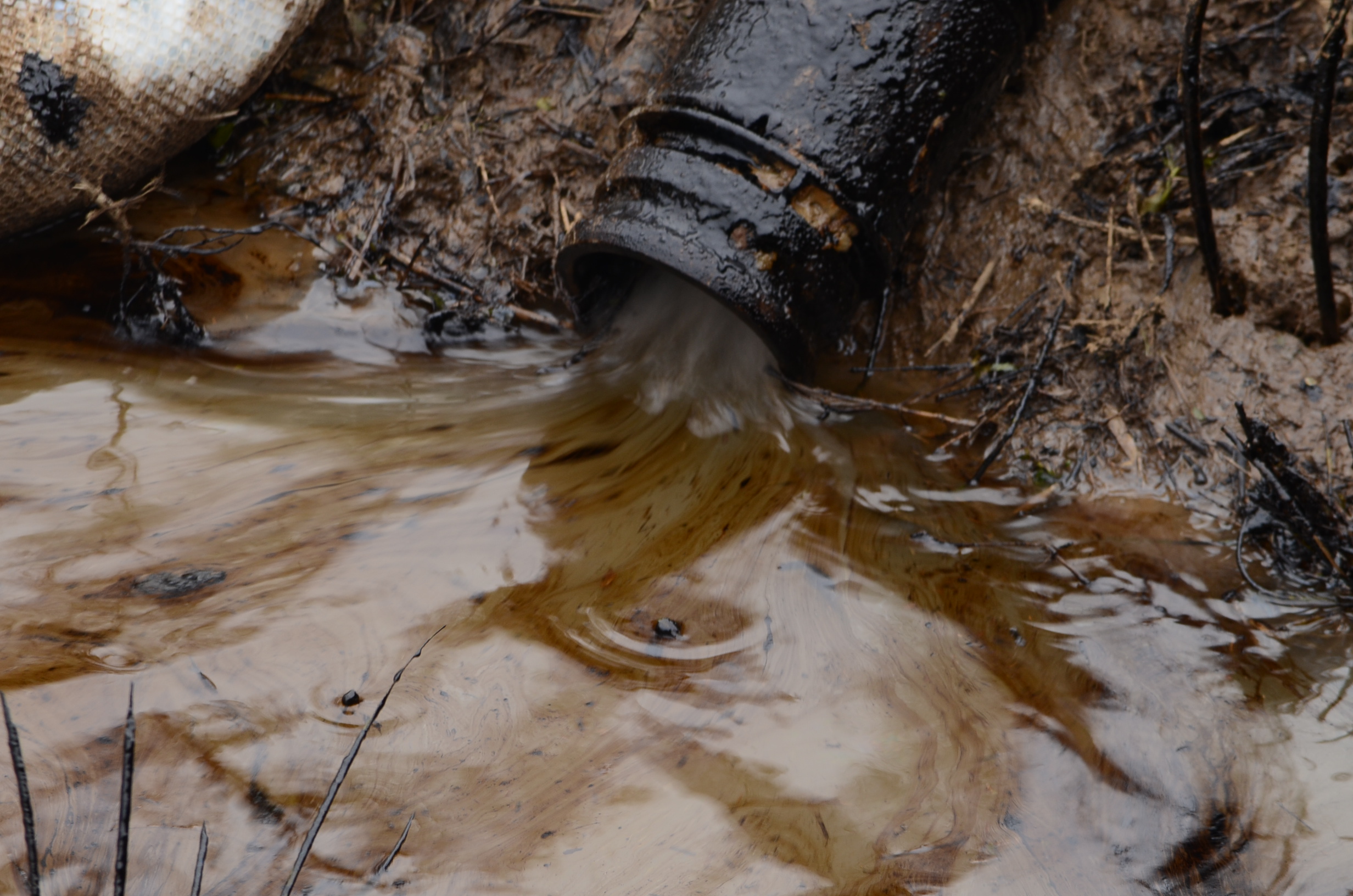Arkansas Spill Points to Problems With Diluted Bitumen Crude Transport Through Aging, Repurposed Pipelines; Tar Sands Crude Poses a Threat to Texas Drinking Water, Home, and Public Health
The recent Good Friday tar sands crude spill in an Arkansas neighborhood and an earlier catastrophic spill in Michigan highlight the dangers of transporting large volumes of tar sands crude into the United States through aging pipelines, warn Public Citizen and others.
ExxonMobil Corp. is still cleaning up thousands of barrels of Canadian tar sands crude spilled from the aging Pegasus pipeline near Little Rock, Ark. Michigan residents are still dealing with the fallout from a devastating pipeline rupture in 2010.
“Texas not only has the same 65-year-old Pegasus pipeline coursing through the state but also has the 34-year-old Seaway line, both slated to carry Canadian tar sands or diluted bitumen (Dilbit) crude,” said Rita Beving, Public Citizen consultant.
The Pegasus and Seaway pipelines travel within a few miles of medical facilities, schools, churches and community subdivisions. Both pipelines cross tributaries and are within a few miles or underneath existing water supplies for many Texas cities (See Map of Pegasus Pipeline route through Texas and affected communities and List of affected communities along the Seaway Pipeline route through Texas). The Seaway passes near Dallas, and is slated to carry more tar sands crude than the combined pipeline segments of Keystone XL, up to 850,000 barrels per day.
Not unlike other tar sands spills, the Pegasus pipeline spill near Little Rock forced the evacuation of people from dozens of homes. In 2010, the largest onshore spill in U.S. history occurred in Michigan, where a pipeline break on a 43-year-old pipeline spewed tar sands into the Kalamazoo River. This Enbridge Lakehead B spill resulted in residents being evacuated up to six miles away, as high levels of benzene and hydrogen sulfide became airborne and sickened local residents. More than 1.1 million gallons of tar sands or dilbit spilled into the river and traveled more than 35 miles along the waterway. Almost three years and $850 million later, the problematic spill is still not cleaned up, and Enbridge has now been ordered by the U.S. Environmental Protection Agency (EPA) to dredge the river.
Children living near the Michigan spill reported cases of vomiting, upset stomach, shortness of breath, lethargy, headaches, rash, eye irritation, sore throat and cough within the first week. Adults experienced similar symptoms, and pets suffered from continuous vomiting and diarrhea. The EPA established that benzene levels in the area near the spill were exponentially higher than the standard established as safe for human exposure.
Dr. Riki Ott, a marine toxicologist with experience in crude oil spills including the Exxon Valdez and the Michigan spill noted, “In Michigan, we had 16-year-olds having seizures, and adults with dizziness and symptoms of a tightening chest after the Kalamazoo spill. Now you are seeing the same thing happen in Little Rock. It could happen next in your backyard, and you may not even know a pipeline was carrying tar sands until after a spill happens, as many communities haven’t even been told that this is what’s going through the line. This can repeat itself wherever Canadian tar sands is being transported.” (see Human health risks of exposure to tar sands)
“As we see the Michigan spill still being cleaned up today with the the long-term health effects still unknown, we can only anticipate that cities in Arkansas may face similar issues,” said Tom “Smitty” Smith, director of the Texas office of Public Citizen. “Seeing what has now transpired in these other states, and now with both the Pegasus and Seaway pipelines in Texas carrying tar sands crude, a tar sands rupture on aging pipelines is not a matter of if, but when. These incidents beg the question to our lawmakers, ‘What are you going to do to help protect Texas from such spills?”
The Seaway line passes within one to two miles of 8 medical facilities and nursing homes, 45 schools, 56 churches and dozens of Texas communities include Rockwall, Terrell, Corsicana and Royse City, Kaufman, and Baytown. Seaway crosses near tributaries of Lake Lavon, Cedar Creek Reservoir and beneath Richland Chambers Lake – all major water supplies for Dallas and Ft. Worth.
The Pegasus line crosses into Texas northeast of Dekalb and travels within a couple miles of more than 29 Texas communities including Mt. Pleasant, Mt. Vernon, Winnsboro, Canton, Navarro, Polk and Livingston. Upon initial analysis, at least 16 schools and 12 medical facilities are within one to two miles of Pegasus. More than 14 lakes including Lake Cypress Springs, Bob Sandlin, Lake Fork, Cedar Creek Reservoir, Lake Halbert, and five tributaries of Lake Livingston are also crossed by the pipeline. Some of these water supplies serve as drinking water sources and are favorite recreational areas for sportsmen.
Elliott Gilbert, a Dallas documentary filmmaker, and his assistant Joe Capps, rushed to the Arkansas spill site after it was discovered. Both commented to Public Citizen about visiting an Arkansas elementary school where they interviewed the principal, who had sent children home due to dizziness, nausea and vomiting. The school was within a half mile of the Pegasus spill.
“After filming and hearing from the school principal and the residents in Arkansas, it definitely gives me pause as to what could happen with communities near Dallas should our area encounter such a spill,” Gilbert said. “I have a young daughter. I shudder to think that could happen near her school.”
As the proposed Keystone XL northern segment awaits approval from the U.S. State Department and the southern segment is now being constructed in East Texas, many worry that repurposed pipelines carrying tar sands are the wave of the future.
“Why should pipeline companies apply for permits and go through tedious environmental impact statements when you can repurpose an old pipeline, with little, if any, environmental scrutiny from a state agency and with little resistance from landowners who already have an existing line in the ground,” asked Beving. “These pipeline companies that are carrying Canadian tar sands are in a race to get lucrative shipping contracts with Texas refineries. Why not get your product to market the easy way with an old repurposed pipeline instead of undergoing permits and review by applying for a new construction permit?”
Beving notes that some companies, such as Enbridge, are twinning or adding additional lines to existing ones as they are doing with the existing Seaway pipeline. “Using existing pipelines and then twinning them is like building your own tar sands superhighway, an interstate for crude oil that you can expand at will with built-in condemnation rights. But this product is more toxic and problematic to clean up,” she said.
Tar sands are mined and then diluted with natural gas condensate and a host of toxic chemicals, according to Chris Wilson, a chemical engineer who has consulted for Public Citizen. Tar sands or dilbit is up to 70 times more viscous, 20 times more sulfuric and 10 times more acidic than conventional crude.
“Canadian tar sands are not your granddaddy’s West Texas crude,” Wilson said. “It is transported from Canada in a more ‘raw’ form than other forms of oil, and that is what makes it more deadly and more problematic to clean up.”
Added Ed Parten, executive director and political liaison of Texas Black Bass Unlimited, “Lake Fork is the ultimate sportsmen’s fishing destination, known throughout Texas and the world for its premier bass fishing. It is my understanding that Lake Fork was built over this pipeline. Based on what we know with the Michigan tar sands spill, if this pipeline ruptures, it not only will destroy a valuable water supply, but also will devastate this great recreational resource known to fishermen across the country.”
“Texas lawmakers are debating pipeline safety standards for other types of pipelines during this session,” Smith said. “Are they asking the right questions to protect Texans from tar sands? Do they understand the urgency to act now to protect Texas before we have a tar sands spill here? And finally, do they have the political will to enact legislation to protect our state? We need proper notice, disclosure, filing of emergency response plans before operations begin, and a Texas liability fund to protect our state, since these companies are exempt from paying into the U.S. Spill Liability Fund.”




